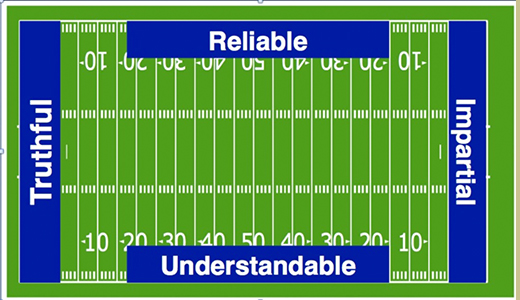Practice Trumps Policy (Part 2 of 4): Using Parameters to Drive Grading Decisions &
Increasing Teachers Grading Playing Field
There are many conversations being started or continuing recently related to grades and grading practices: Teachers Throwing Out Grades, Standards Based Grading, Standards Referenced Grading, Students Self-Reporting Grades, etc. These likely stem from seeking what actions will best drive learning to the highest levels. Many traditional and even archaic grading practices that are still being used are in misalignment with solid evidence around quality formative assessment, feedback, etc. The answer to addressing practices we no we should challenge (zeros for missing work, refusal to ever accept late work, habitually averaging grades, etc.) is not in mandates and school policy formation—Instead grading change that leads to learning must involve increased teacher voice.
Parameters to Drive Grading Decisions
Before we jump into any dialogue around so many of the technical aspects of grading and feedback practices, we first must establish some guidelines and considerations for how any student grade is determined. First, we must determine the mission of our grades. A set of questions we can pose with colleagues to challenge each other and determine common ground as well as where we differ in terms of our views on a mission for grades:
1. Is it more important when students learn or that they learn well?
2. Is our purpose to develop talent – or to sort/select talent?
3. Are grades for feedback (system) or a system of punishments and rewards?
These three questions can tell us a lot about our grading beliefs and to help determine a mission for grades and grading actions in our school(s).
Once we determine our mission for grades, we then have to determine boundaries as well as the playing field for teachers to use to adapt practices specific to their classrooms, disciplines, and situations. In my book, Effective Grading Practices for Secondary Teachers (2015, Corwin Press), I discuss the power and importance of four grading parameters:
Nagel, D. (2015). Effective Grading Practices for Secondary Teachers
Practical Strategies to Prevent Failure, Recover Credits, and Increase Standards-Based/Referenced Grading. Corwin Press. Thousand Oaks, CA.

